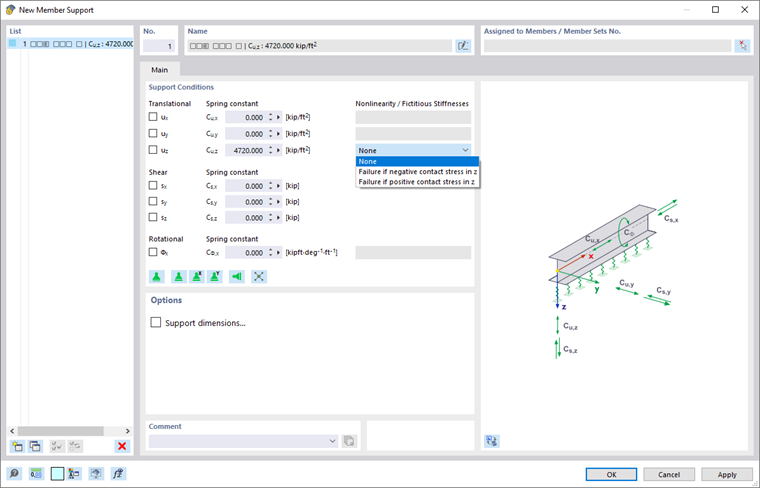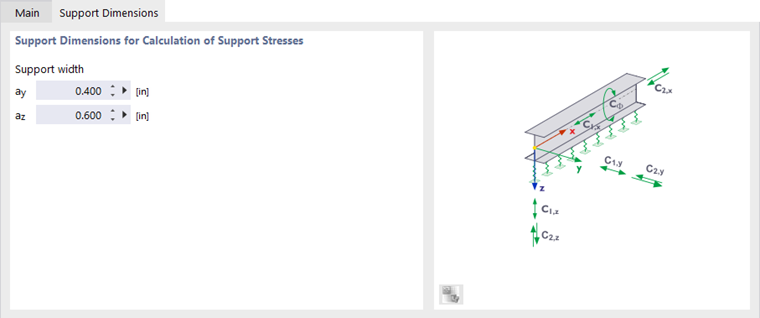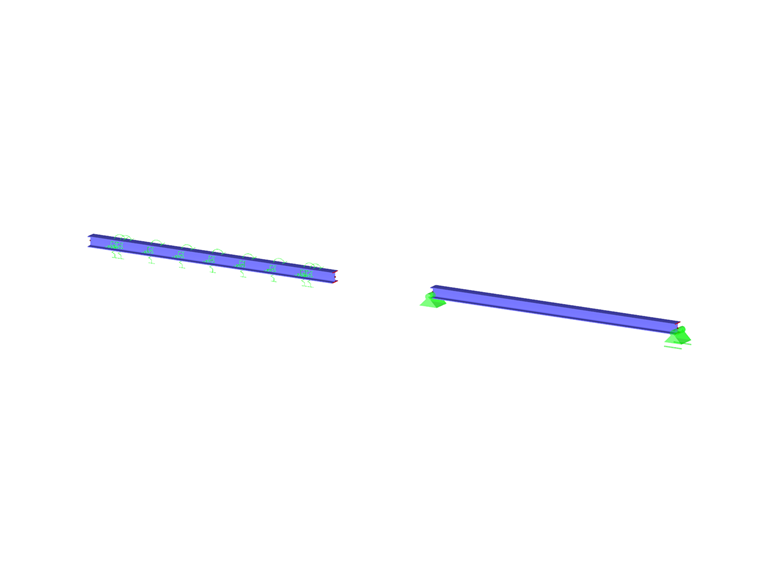A member support describes the boundary conditions along a member. Displacements and rotations on these internal member nodes can be prevented or limited by translational and rotational springs. This allows you to model, for example, foundation beams as elastic member supports in the model.
Main
The Main tab manages the basic support parameters.
Support Conditions
The support conditions are divided into "Translational", "Shear", and "Rotational" degrees of freedom. To define a support or restraint, select the check box for the respective axis. The check mark indicates that the degree of freedom is blocked and the member's displacement in or rotation about the corresponding direction is possible.
If no support or restraint is available, clear the respective check box. The constant of the translational or rotational spring is then set to zero. You can adjust the "Spring constant" anytime in order to model an elastic support of the member. Enter the spring stiffnesses as design values.
Translational
The "Spring constant" of a foundation beam is determined considering the cross-section width in order to obtain a member-related translational spring in [N/m2] based on the subgrade reaction modulus. It describes the member force in [N] per meter of member length and width that is required to compress the soil by one meter. Multiply the value by the actual cross-section width and enter the result as the spring constant Cu,z (the local z-axis is usually directed downwards for strip footings with members in a horizontal position).
When a member is horizontal or inclined, the support symbols are always displayed under the member (that is, on the side in the direction of gravity). For a vertical member, the orientation of the member axis z is governing. On the other hand, a failure has an effect regardless of the graphical display: The stress criterion, which is related to the orientation of the local z-axis, is decisive here.
It is possible to specify a "Nonlinearity" for the uz direction (see the image New Member Support). The criterion "Failure if negative or positive contact stress in z" controls the forces that the support is able to absorb.
Check the orientation of the local z-axes when applying failure criteria. You can display and hide the member axes using the member shortcut menu.
If the support fails in the direction of the z-axis, also the structural supports in the other directions are not effective.
Shear
Shear springs can be used to determine the shear capacity of the soil. The shear stiffness sx describes the axial stiffness due to the strain stiffness E ⋅ A. The spring constants sy and sz are determined as the product of the Poisson's ratio of the soil and Cu,z.
Rotational
The constant of a rotational spring describes how the rotation of the member is restrained about its longitudinal axis.
Options
The "Support dimensions" check box is available as soon as a structural support is available in the direction of the member axes y or z. In the Support Dimensions tab, you can then define the geometry of the member support.
Support Dimensions
The dimensions of the support are required to determine the support stresses (in preparation).


